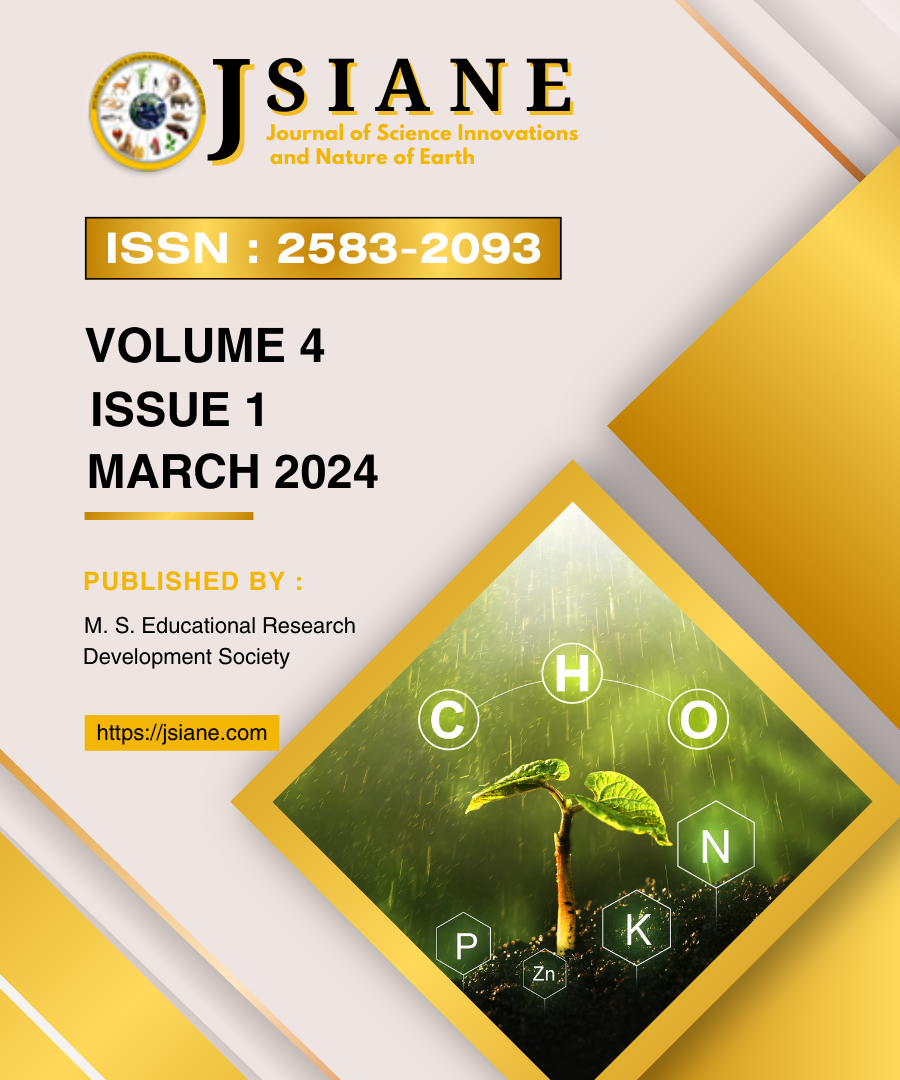URBANIZATION TRENDS IN UTTAR PRADESH: A CASE STUDY OF LUCKNOW
DOI:
https://doi.org/10.59436/10.59436/jsiane360Keywords:
Urbanization, Growth, Lucknow, Sustainability, InfrastructureAbstract
This research paper explores the urbanization trends in Uttar Pradesh, with a specific focus on the city of Lucknow, the state capital known for its rapid growth and development. Using a combination of geospatial analysis and satellite imagery spanning three decades (1991 to 2021), the study investigates the spatial and temporal patterns of urban expansion in the city. The findings reveal that Lucknow's built-up area has increased nearly fivefold during this period, driven primarily by edge development and leapfrog growth, which pose challenges such as inefficient land use and increased pressure on infrastructure. The paper also highlights the uneven distribution of urban growth across different city zones, influenced by factors like transportation networks and land-use policies. These trends underscore the urgent need for sustainable urban planning approaches that balance growth with environmental and social considerations. Recommendations include enforcing zoning regulations, promoting infill development, improving public transit, and investing in green infrastructure to guide the city towards a more resilient and sustainable future.
References
Census of India. (2011). Provisional Population Totals. Office of the Registrar General & Census Commissioner, India.
Singh, R., & Kumar, A. (2019). Urban Growth and Development Dynamics of Lucknow City. Journal of Urban Studies, 45(3), 210-225.
Kumar, S., & Verma, P. (2020). Infrastructure and Economic Development in Lucknow: The Role of Transportation Networks. Indian Economic Review, 55(1), 35-52.
Sharma, N., Gupta, R., & Singh, M. (2022). Spatiotemporal Analysis of Urban Expansion in Lucknow Using Satellite Imagery. Sustainability, 14(6), 3227.
Singh, A., Tiwari, S., & Yadav, P. (2021). Spatial Patterns of Urbanization in Uttar Pradesh: A Focus on Lucknow. Geographical Review of India, 83(4), 298-310.
Gupta, R., & Mishra, S. (2018). Informal Settlements and Urban Infrastructure Challenges in Lucknow. International Journal of Urban Planning, 12(2), 104-117.
Jain, V., & Tiwari, R. (2020). Transportation and Urban Growth: Lessons from Lucknow. Journal of Transport Geography, 87, 102788.
Ministry of Housing and Urban Affairs. (2021). National Urban Policy Framework. Government of India.
Chaudhary, R., & Mishra, S. (2018). Urban Sprawl and Its Impact on Agricultural Land in India. Journal of Urban Planning, 45(2), 112-125.
Gupta, A., Singh, R., & Verma, P. (2023). Spatiotemporal Analysis of Urban Growth in Lucknow using Remote Sensing Data. Sustainability, 15(3), 227.
Joshi, S., Kumar, P., & Yadav, V. (2021). Infrastructure Challenges in Rapidly Growing Indian Cities: A Case Study of Lucknow and Noida. Urban Studies Journal, 58(6), 1024-1040.
Khan, M., & Malik, A. (2020). Urban Governance and Sustainable Planning in Uttar Pradesh. Indian Journal of Public Policy, 11(1), 55-69.
Kumar, D., & Singh, A. (2018). Patterns of Urbanization in Uttar Pradesh: Trends and Drivers. Geographical Review of India, 80(4), 395-408.
Kumar, S., Singh, R., & Joshi, N. (2020). Ribbon Development and Its Consequences in Indian Cities. Transport Geography, 85, 102674.
Mehta, P., & Kumar, R. (2020). Sustainable Urban Development in Indian Cities: Lessons from Bangalore and Pune. Journal of Sustainable Cities, 12(2), 145-160.
Nair, S., & Raj, M. (2019). Socio-economic Implications of Urbanization in Noida. Economic & Political Weekly, 54(12), 38-45.
Patel, V., & Kaur, J. (2021). Participatory Urban Planning in India: The Role of Local Communities. International Journal of Urban Policy, 9(1), 24-39.
Patel, Y., Sharma, A., & Singh, L. (2022). Environmental Impacts of Urban Sprawl in Lucknow. Environmental Monitoring and Assessment, 194(8), 589.
Rao, M., & Sharma, P. (2019). Leapfrog Development and Urban Sprawl: A Challenge for Sustainable Cities. Journal of Urban Affairs, 41(5), 721-736.
Sharma, D., & Singh, M. (2023). Sustainable Urban Planning Strategies for Uttar Pradesh. Urban Planning and Development, 149(1), 04022048.
Sharma, S., & Verma, R. (2020). Urban Growth and Land Use Change in Uttar Pradesh. Journal of Environmental Management, 259, 109787.
Singh, A., & Yadav, K. (2021). Spatial Patterns of Urban Expansion in Lucknow. Geospatial Information Science, 24(3), 202-214.
Tiwari, P. (2022). Economic Drivers of Urbanization in Uttar Pradesh: The Role of IT and Industry. Indian Journal of Economic Development, 18(4), 213-230.
Verma, S., & Singh, A. (2021). Challenges of Urban Densification in Indian Cities. Journal of Urban Affairs, 43(7), 1011-1027.
Congalton, R. G. (1991). A review of assessing the accuracy of classifications of remotely sensed data. Remote Sensing of Environment, 37(1), 35-46.
Government of Uttar Pradesh. (2020). Urban Development Plan of Uttar Pradesh. Lucknow: U.P. Urban Development Authority.
Kumar, S., Mishra, P., & Tripathi, R. (2017). Spatio-temporal analysis of urban growth in Lucknow city using remote sensing and GIS. International Journal of Geoinformatics, 13(2), 45-56.
Lo, C. P., & Yang, X. (2002). Drivers of land-use/land-cover changes in the Pearl River Delta, China. Environment and Planning B: Planning and Design, 29(3), 303-321.
Lu, D., & Weng, Q. (2007). A survey of image classification methods and techniques for improving classification performance. International Journal of Remote Sensing, 28(5), 823-870.
Lu, D., Mausel, P., Brondízio, E., & Moran, E. (2004). Change detection techniques. International Journal of Remote Sensing, 25(12), 2365-2407.
McGarigal, K., Cushman, S. A., & Ene, E. (2012). FRAGSTATS v4: Spatial Pattern Analysis Program for Categorical and Continuous Maps. University of Massachusetts.
Downloads
Published
Issue
Section
License
Copyright (c) 2024 Maharaj Singh Educational Research Development Society

This work is licensed under a Creative Commons Attribution-NonCommercial 4.0 International License.










